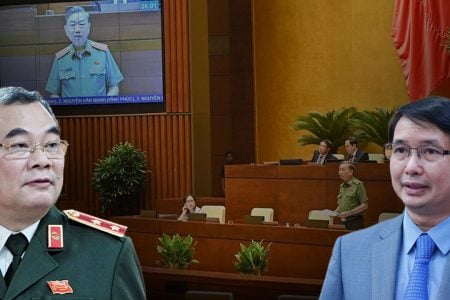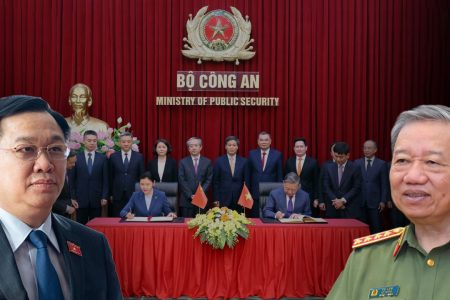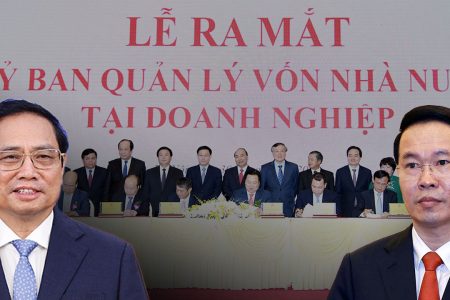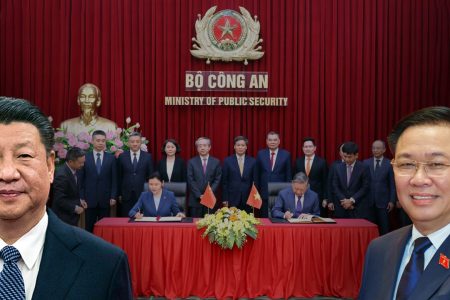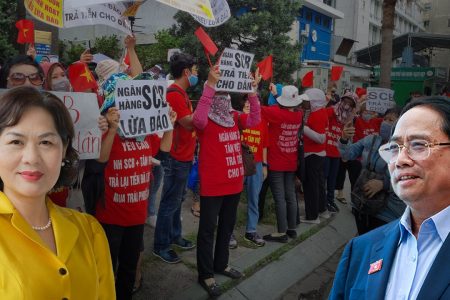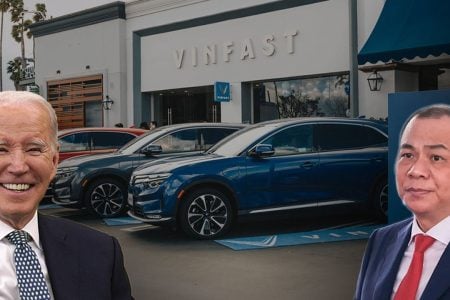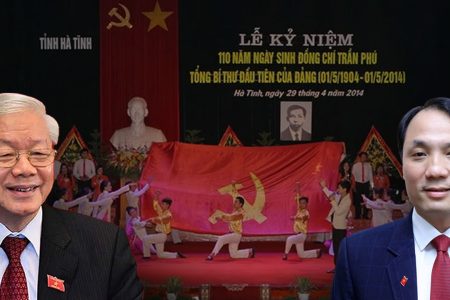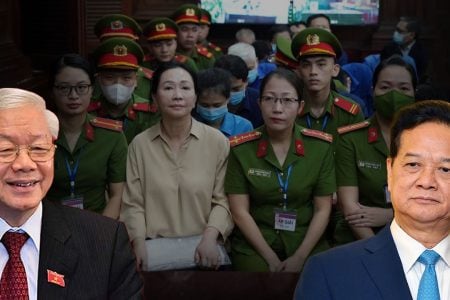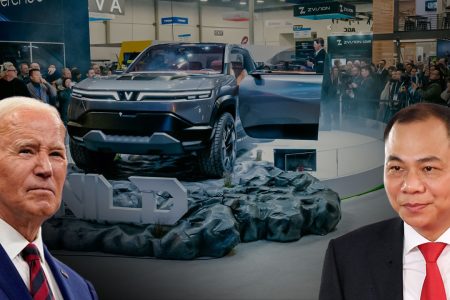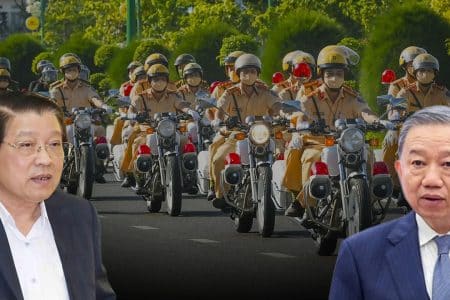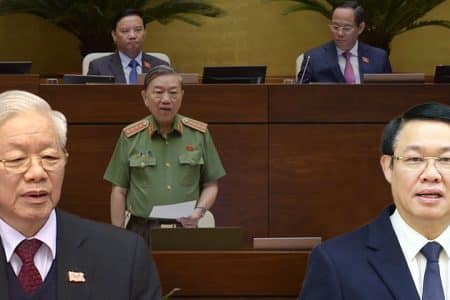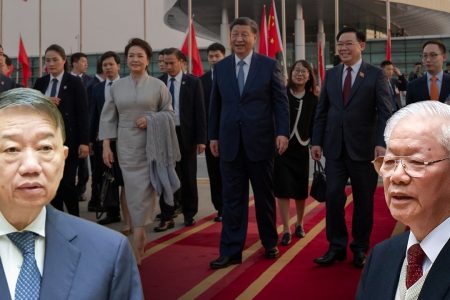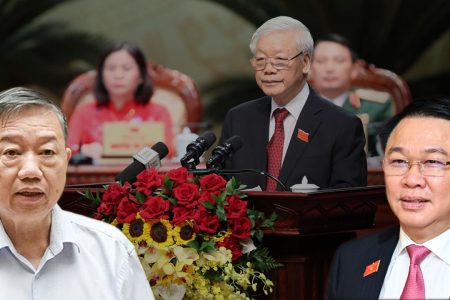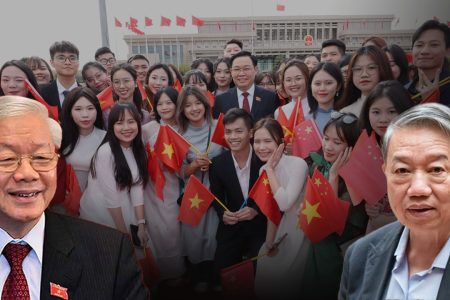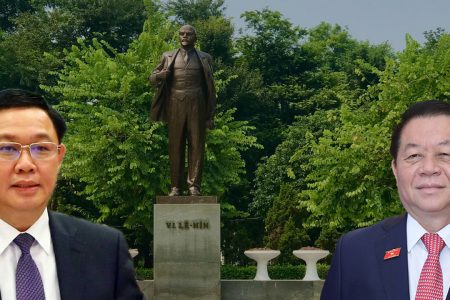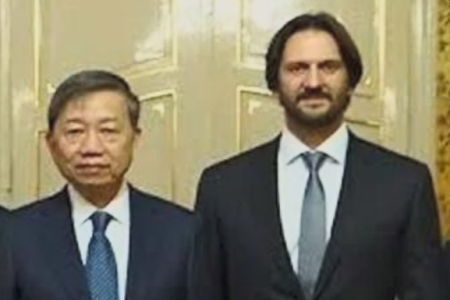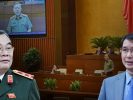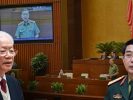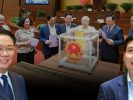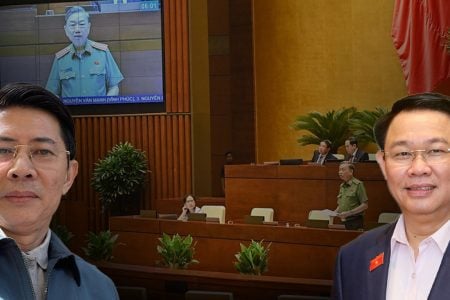The construction of Ho Chi Minh monuments wort a hundred billion and trillion everywhere is to consolidate the regime and also a fertile ground for corruption, according to some analysts.
In the midst of Vietnam fighting against the Covid-19 pandemic, the Department of Culture and Sports of Kien Giang province announced on August 7 that it spent VND353 billion to build a 8.29-hectare square on Phu Quoc Island, including a monument of late leader Ho Chi Minh 18 meters tall, causing controversy.
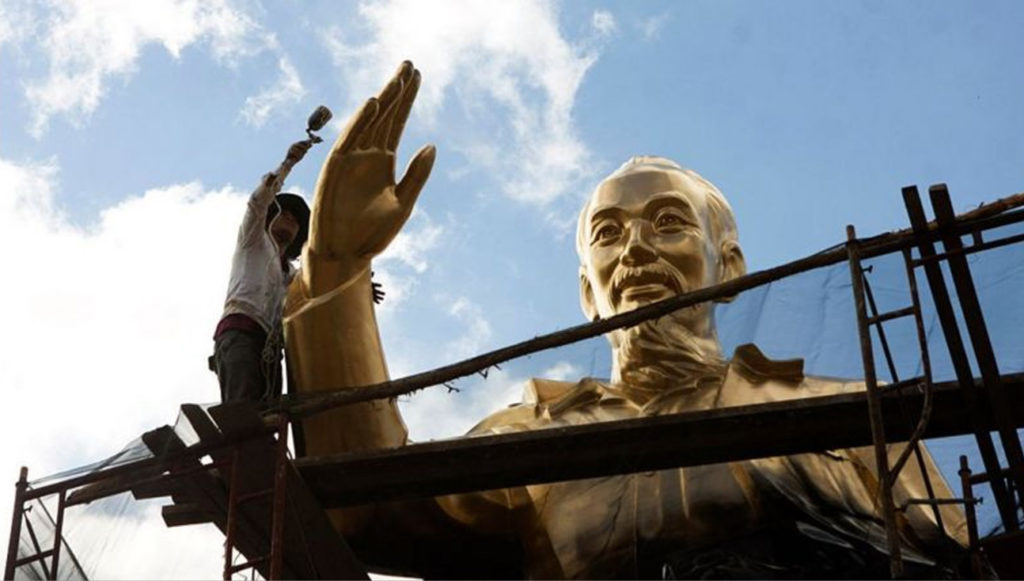
Previously, on June 13, Quang Binh Provincial People’s Committee held the inauguration of the monument of late President Ho Chi Minh with the people of Quang Binh, the project “celebrating the 63rd anniversary of Uncle Ho’s visit to the locality” is located in the center of the city of Dong Hoi, with prominent yellow monuments cluster.
This project with an investment of VND120 billion appeared many cracks after just over a month since its inauguration.
Talking to BBC News in Vietnamese, Dr. Nguyen Quang A evaluated:
“The construction of the monuments of Ho Chi Minh as well as other communist leaders like Fidel is a consistent policy of the Communist Party of Vietnam. If you look at the history of the world, all rulers are extremely attaching great importance to symbols such as squares, leaders pictures, flags, songs or monuments, they are a very important part of the system.”
“It helps instill in the heads of people an attachment to the regime,” he added.
Imposing ideology to consolidate the regime
In 2015, Son La Provincial People’s Committee announced a project to spend VND1.4 trillion to build Ho Chi Minh square and monument, in which “Uncle Ho statue work accounts for about VND200 billion.”
In the context of Son La being a poor province, many people lack food, this giant project was immediately opposed by the people, intellectuals and some National Assembly members.
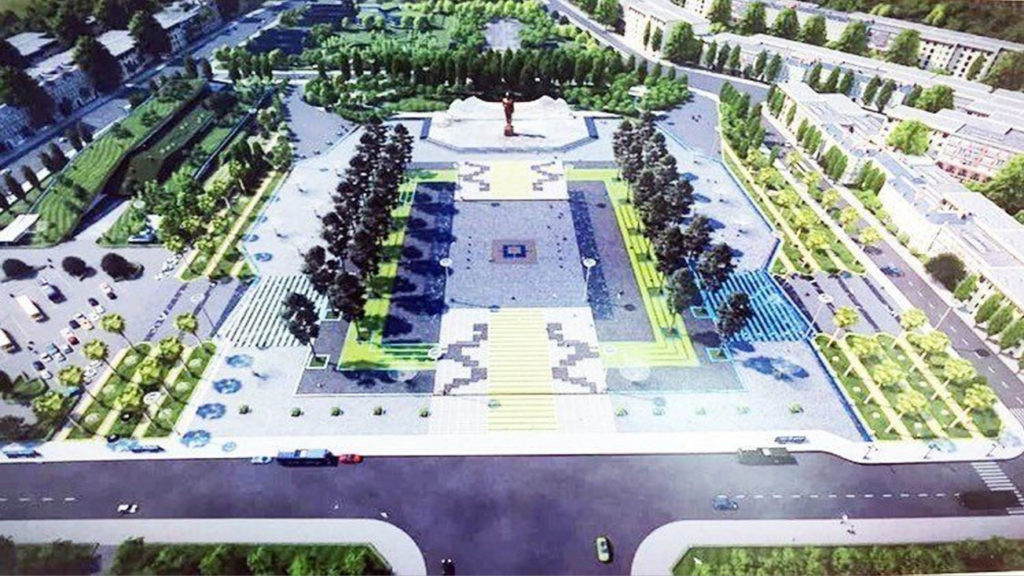
In Vietnam, hundreds of monuments, temples, memorial park of Ho Chi Minh and other communist leaders, such as Le Duan, Fidel Castro, Ton Duc Thang, etc. have sprung up throughout the provinces over the years, with the cost of each project from a few tens of billion dong to a thousand billion dong.
The number of monuments continues to increase amid the new project is being implemented.
Monument work N’Trang Long, Dak Nong, with an investment of VND147 billion, is being delayed, rekindling public opinion about the phenomenon of mass-building monuments in many provinces and cities in Vietnam over the years. .
The Monument Vietnam Heroic Mother is most scandalous because it has a budget of VND411 billion despite winning a gold medal at Vietnam Fine Arts Exhibition 2015.
This is the largest monument in Southeast Asia, located on an area of 15 hectares in Tam Phu commune, Tam Ky district, with a height of 18.5 meters made from marble Binh Dinh.
Not to mention public opinion has repeatedly spoken about a series of monuments worth hundreds of billion of Vietnamese dong but rapidly degraded after inauguration: statue of Ly Thai To (Hanoi), female General Le Chan (Hai Phong), Dien Bien Phu (Dien Bien), Tran Hung Dao (Nam Dinh) … in particular, many construction works are quickly cracked on the body or subsidence or being struck by lightning.
Under the planning project, Vietnam built 14 more Ho Chi Minh monuments in the 2015-2030 period (excluding 31 monuments that were built before the project), including completed monuments in Quang Binh, Binh Dinh in recent years … The above number only includes monuments of group A, which are big monuments in urban centers of administrative centers, not to mention a large number of monuments in the campus of offices and organizations, and schools.
Most of the works are located in the city center, eyeing people every day as if reminding them not to forget the leaders as well as the ideology they founded and cultivated. According to analysts, the construction of the Ho Chi Minh monument was to “impose ideology” to serve the purpose of “consolidating the regime.”
“The monument building helps consolidate the regime, instilling in the minds of the people a thinking framework within the environmental limits created by the Communist Party itself. This is the imposition of ideas through symbols. Even music and art are part of this ruling system,” said Nguyen Quang A.
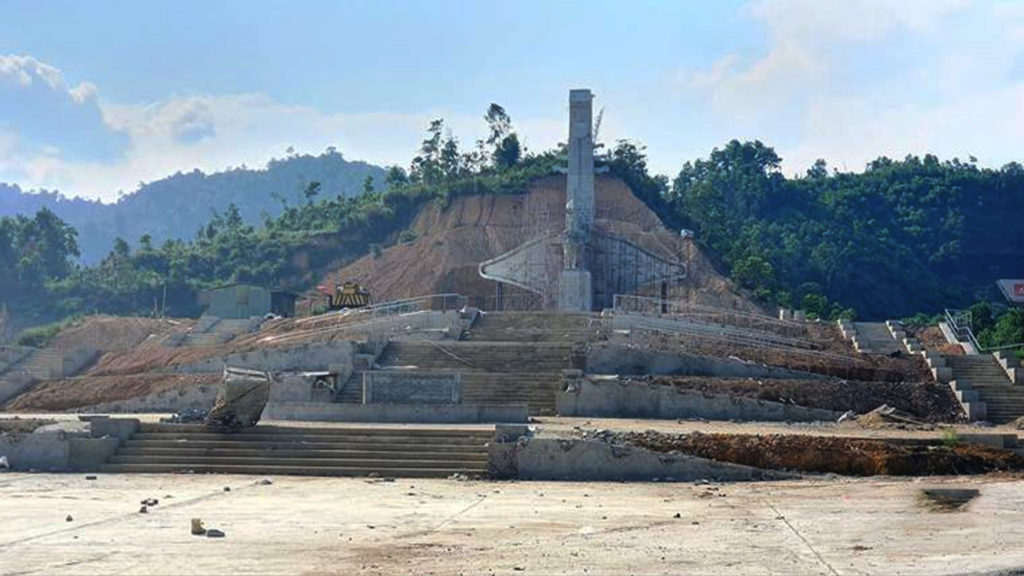
He further analyzed: “These symbols have a huge and far-reaching influence. People have to hear such things from small to big through newspapers, dramas, and movies. Gradually, these things are to take on people, make them proud of that tradition and history and turn it from a group of people into a community made according to their pattern.

Without criticism, without freedom of expression to unravel these issues, people can easily fall into a daze with such beliefs.”
Mr. Nguyen Quang A assessed that the impact of budget spending on monument construction on the nation is “terrible“, but with the Communist Party of Vietnam, the monument building “contributes to consolidate the regime, so they are ready to spending.”
“This is an important part of the thinking repressing apparatus. The problem is not to spend the budget to build monuments on other urgent items such as schools, hospitals … but the problem is that they do not regret money to do these things,” he analyzed.
“They still have to worry about urgent problems but at the same time, the symbols still have to be maintained. Many times we look down on them and that is the danger. Because of the depths of such icons, they want to hit people’s subconscious and want to rewrite history, draw a framework for people to think in it. Must understand the depths, intoxication to be able to evaluate and find solutions.”
From Poland, writer and businessman Tran Quoc Quan told BBC News Vietnamese that building an outdoor monument was not the culture or belief of the ancient and modern Vietnamese. He said this culture followed the French colonialists introduced into Vietnam in the process of colonial civilization.
“The Party and government have always identified the image of Ho Chi Minh as the spiritual support of the entire party, army, and people for the survival of the regime,” said writer Tran Quoc Quan.
“In the formerly socialist Eastern European countries and the former Soviet Union, communist leader monuments built in most major cities stem from the cult of the individual, the cult of the leader without relying on the traditional culture,” Mr. Quan said.
In his relationship with Vietnam, Mr. Quan recounted a past with many changes in his place: “I have the luck to witness the collapse of Eastern European socialism and the Soviet Union in 1989-1991, starting in Poland during the days of the institutional transition, I saw firsthand the Polish people eagerly destroying the statue of F.E. Dzerzhinsky, being Polish, Lenin’s fighting partner, the boss of the Treca security forces of the Soviet Union after October Revolution.”
“I also saw the Polish people demolish a series of Lenin statues in the sizzling revolutionary days,” he said. “In 2014, after the Maidan movement in Ukraine overthrew the pro-Russian President Viktor Yanukovych, many Lenin monuments were overturned in the cheers.”
Easy to license and easy to corrupt
According to observers, because Ho Chi Minh was a symbol of the regime, projects with the name of this leader were often considered first by the government in terms of politics, ignoring economic factors. That’s also why these projects are often easier to get approved.
Dr. Nguyen Quang A reiterated an article by a foreign author on Ho Chi Minh trail many years ago, which details “praise for the idea of naming the road.”
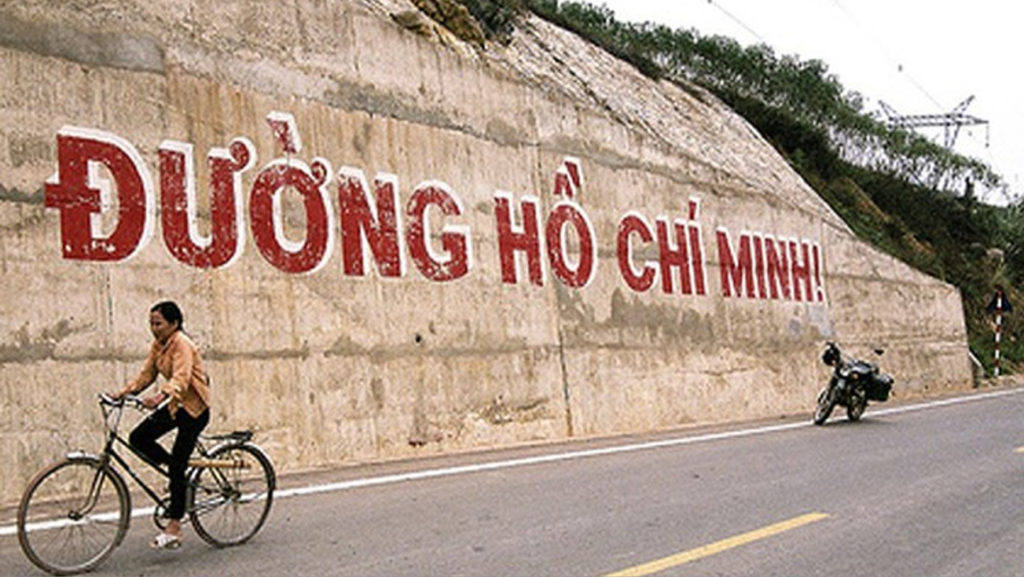
“Bringing money to build a road on the middle of the mountain is completely economically insignificant, but because it bears the name Ho Chi Minh, touching the core of ideology and symbols of the system is easy to pass. Ho Chi Minh monuments are like that,” he said.
These projects will become fertile ground for corruption. But since the engine is in line with the system, it is easy to approve. This is a cost in exchange for human worship. There are many people who worship, hang a picture of the leader on the altar is what makes this regime easy to rule. Thus, for the people, this can be a disaster but for those who want to take power, want to maintain, this is a profitable investment in the system.”
Writer Tran Quoc Quan assesses that in the context of Vietnam is still poor, the construction of monuments and Ho Chi Minh Square, as well as other communist leader monuments, and monuments are heavily political and propaganda in most localities it will lead to many consequences.
“This restrains economic and social development, impoverishes the country. It also backfires, reducing the love for leaders of a part of the population. Not to mention it is contrary to Ho Chi Minh’s will, “writer Tran Quoc Quan said, saying that “Ho Chi Minh monument and square are easy to become ground for corruption.”
In another aspect, Dr. Nguyen Quang A thinks that the construction of public spaces such a s squares is of great significance to the community. “However, the statues themselves do not have too much meaning, people can destroy them one day.”
Dr. Nguyen Quang A said that in order to avoid economic as well as political consequences, it is necessary to “raise the knowledge of the people, point out the schemes of the regime and the people have to speak up.“
Thoibao.de (Translated)




